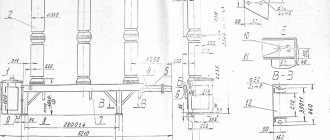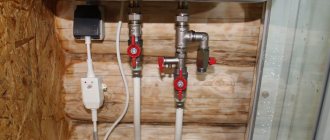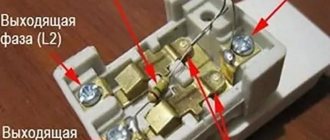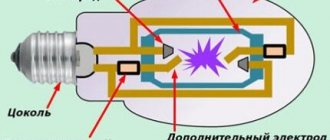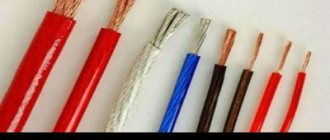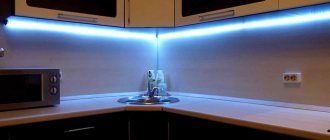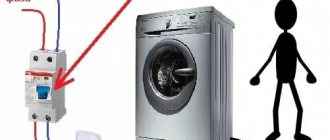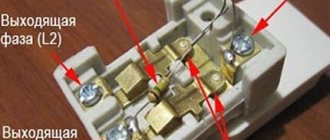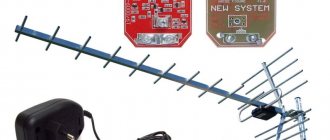Design and types of SF6 switches
These systems are designed for operational monitoring of the condition of high-voltage power lines. They are very similar to oil ones, but have a different working environment - the principle of operation is based on the properties of gas compounds instead of oil. The medium used is SF6 (sulfur hexafluoride).
The advantage of SF6 gas is its unpretentiousness. If oil models require special care, periodic oil changes and cleaning, then SF6 models do not face such a problem. In addition, the gas is durable: it does not degrade over time and does almost no harm to the mechanical elements of the switch.
Physically, SF6 is a non-flammable, colorless and odorless gas. It is much denser than air, and its molecular weight is 5 times that of air. The gas is resistant to external influences and retains its characteristics: even if an arc occurs in it and decay begins, after some time the state of the mixture will be restored.
There are two types of SF6 circuit breakers (hereinafter referred to as EB):
- tank;
- core EV.
Column electric switches are used in 220 V networks; these are standard single-phase switches. They consist of two interconnected parts:
- arc extinguishing;
- contact part.
Both have the same dimensions and volume.
Tank EVs are smaller. They include one of the types of drives discussed below. The drive is distributed over several phases, due to which the device gently changes the voltage level. Another advantage of tanks is their large load capacity, which is achieved by the presence of a built-in transformer.
The drive here is also a regulator: it provides switching on/off of the flow of electricity and maintaining the electric arc. The following types of EV drives are distinguished:
- spring-hydraulic (PPRG);
- simpler spring ones (PPRM).
Typically the actuator is mounted on a low pedestal or near the ground so that it can be easily reached and adjusted by maintenance personnel. The part consists of:
- turning mechanism;
- release devices;
- locking latch.
Spring ones are reliable and have a very simple design; they use only simple mechanics. During commissioning, a certain compression of the spring is established, and after moving the control lever, it straightens with further opening of the contacts. This type of EV often serves as a stand for presentations of the behavior of sulfur hexafluoride under the influence of an electric field.
Spring-hydraulic SF6 equipment is hydraulically controlled. It is more expensive, but more effective, since it can independently change the position of the latch.
In addition to the design, there are different types of EVs based on the principle of interrupting the electric arc:
- rotating;
- air (autocompression) EVs;
- longitudinal blast;
- similar to the previous point, with gas heating.
All internal components of the EV are placed in a container filled with SF6 gas. Operation control is carried out remotely, using electronics, or mechanically manually. Layout of all components of a typical EV:
Such features lead to rather large dimensions of the devices. Note that purely manual control is relevant for low-power samples; in other cases they resort to:
- mechanical control;
- cargo management;
- spring;
- electromagnetic method;
- pneumatic
But almost everywhere there is an emergency manual lever.
The electromagnetic drive requires external power, so such an EV is connected to a current source of 220 V and 58 A. The system is very reliable and can be successfully operated in adverse conditions. In a pneumatic one, the working unit is a cylinder with a piston. The action of compressed air ensures high response speed.
Specifications
The table shows the technical characteristics of VGT circuit breakers - 110 kV.
Table 5.1 – Basic technical data of the VGT circuit breaker - 110 kV
| Parameter | Permissible value |
| Rated voltage | 110 kV |
| Shutdown time | 0.035 s |
| Rated current | 2500 A |
| Operating voltage (maximum) | 126 kV |
| Maximum breaking current | 40 kA |
| Automatic reclosure pause | 0.3 s |
| Short circuit current (maximum) | 100 kA |
| Short circuit current flow time | 3 s |
| SF6 gas leak in 12 months | 0,8 % |
| Heating device voltage | 220 V |
| type of drive | Spring |
| Creepage distance | 270 cm |
| Mass of SF6 gas | 6.3 kg |
| Number of drives | 1 |
| Switch weight | 1700 kg |
| Time until scheduled repairs | 12 years |
| Lifetime | 25 years |
Principle of operation
SF6 circuit breakers perform their function by isolating the phases with a gas layer. Having received a signal to turn off the electrical equipment, the contacts open and an arc is formed in the gas environment. Electricity decomposes SF6, but the arc is weakened due to the high level of pressure. If the switch is adjusted to low pressure, the injection compressors come into action. Current equalizing shunts are also used.
EV functioning diagram:
As already indicated, the secret lies in the working medium - SF6 gas. Its molecules easily bind the electrons contained in SF6 and produce negative ions. This property is sometimes called "electric strength". In air, for example, it is almost three times weaker. In addition, SF6 is capable of cooling effectively.
Thanks to this, systems based on it have become widespread in electrical engineering, for example:
- in power transformer equipment;
- distribution devices;
- high voltage switches;
- on high-voltage power lines connecting remote systems.
In tank samples, control is performed by transformers and drives included in the circuit.
On the image:
- 1 - modules made of porcelain or polymers.
- 2 - transformers.
- 3 - tank with extinguishing device.
- 4 - gas-filled chamber.
- 5 - drive located below (in this case hydraulic).
- 6 - metal frame.
- 7 - valve for adding SF6 gas.
Example
Let's consider the triggering mechanism: as an example, we use a SF6 gas switch LW36 made in China. When a shutdown occurs:
- the built-in spring begins to act on the moving elements;
- the latter are lowered;
- contacts open, with the exception of arc extinguishing contacts;
- after opening the arc extinguishers, an arc is created;
- the heated gas passes into the thermal chamber;
- then the check valve operates;
- SF6 gas leaves the chamber into the gap, the electric arc is extinguished.
When extinguishing a relatively weak current, the initial pressure of the working chamber is small, so additional pressure is drawn from the compression tank.
Arc extinction principle
Advances in the development of SF6 circuit breakers have clearly had a significant impact on the introduction into operation of compactly located outdoor switchgear located in a small area, closed switchgear located indoors and SF6 complete switchgear. SF6 circuit breakers can use different arc extinguishing methods depending on the rated voltage, rated breaking current and objective assessments of the power system (as well as various electrical installations).
In SF6 arc extinguishing devices, in comparison with air arc extinguishing devices, when extinguishing the arc, the outflow of gas through the nozzle does not occur into the air, but into a secret chamber volume filled with SF6 gas at a relatively small excess pressure.
According to the method of extinguishing the electric arc when switching off, the following SF6 circuit breakers are distinguished:
- Auto-compression SF6 gas switching device, where the essential large-scale flow of SF6 gas through the nozzles of the compression arc extinguishing device is created along the movable circuit breaker system (auto-compression switch with one pressure stage).
- SF6 gas switch with electromagnetic blast, in which extinguishing the arc in the arc extinguishing device is guaranteed by its rotation along the ring contacts under the influence of the magnetic field generated by the switched current.
- SF6 circuit breaker with low and high pressure chambers, in which the principle of supplying gas blast through nozzles in the arc extinguishing device is similar to air arc extinguishing devices (SF6 gas circuit breaker with 2 pressure levels).
- Self-generating SF6 gas circuit breaker, where a very important large-scale flow of SF6 gas through the nozzles of the arc extinguishing device is formed by heating and increasing the pressure of SF6 gas by a trip arc in a specially prepared chamber (self-generating SF6 gas circuit breaker with one pressure stage).
Advantages and disadvantages of SF6 circuit breakers
The devices have undoubted advantages:
- versatility. They can be installed in networks with almost any voltage;
- unpretentiousness - EVs work even in fire hazardous areas and seismic zones;
- response speed. SF6 reacts to the occurrence of an arc in a fraction of a second, resulting in almost instantaneous de-energization of the protected devices;
- durability. Gas does not wear out the elements in contact with it, the gas mixture does not degrade and does not need regular replacement, and the outer shell of the EV is durable and protects well from adverse influences;
- work with both alternating and direct high voltage. This distinguishes them favorably from those that are not capable of functioning in high-voltage vacuum networks;
- explosion and fire safety;
- closed working environment - when triggered, there is no exhaust to the outside.
But there are also design-related disadvantages:
- high price. The SF6 switch is simple in design, but difficult to manufacture; the synthesis of the gas mixture is also quite labor-intensive and expensive;
- cannot be placed in any place. Switches are mounted only on a special electrical panel or a specially prepared foundation;
- demanding temperature conditions - at low temperatures EVs are ineffective (but SF6 gas can be heated);
- maintenance requires specific skills and equipment;
- An electromagnetic drive system requires a high-capacity battery.
The main disadvantage of the mixture is its transition to the liquid phase, which is observed under certain conditions. This occurs at certain temperature and pressure ratios. For example, in cold conditions (minus 40 degrees Celsius) a pressure of no higher than 0.4 MPa is required with a gas density lower than 0.03 kilograms per cubic centimeter - which does not provide proper performance. Therefore, in practice, in order to avoid transition to a liquid state, SF6 gas is heated.
VEB-110
Manufacturer: ZAO Energomash (Ekaterinburg)-Uralelektrotyazhmash Rated voltage, kV: 110 Highest operating voltage, kV: 126 Rated current, A: 2500, 3150 Rated shutdown current, kA: 40 VO cycles, at rated current: 5000 VO cycles, at current Short circuit: 20 Thermal resistance current, kA (s): 40 (3) Internal shutdown time, ms: 35 Total shutdown time, ms: 55 Internal switching time, ms: 70 Weight, kg: 2660
SF6 circuit breaker VEB-110 tank. It has a spring drive type PPrK-2000SM and built-in current transformers. Switches are manufactured in climatic versions U1*, UHL1* and UHL1. They are equipped with devices for electric heating of the poles, which, when the ambient temperature drops to -25°C, automatically turn on and off at a temperature of minus 19: 22°C. Monitoring of SF6 gas leakage from the switch poles is carried out using electrical contact density detectors. The poles of the VEB-110 circuit breaker are equipped with an emergency burst disc.
Switching current, kA:
initial effective value of the periodic component
Through short circuit current, kA:
initial effective value of the periodic component
Nominal relative content of the aperiodic component, %, no more
Current of unloaded lines, disconnected without repeated breakdowns, A, no more
Current of a single capacitor bank with a solidly grounded neutral, disconnected without repeated breakdowns, A
Switchable inductive current of the shunt reactor, A
Switched-off magnetizing current of unloaded transformers, A
Consumption of SF6 gas for leaks per year, % of the mass of SF6 gas, no more
SF6 gas pressure, MPa abs:
filling pressure (nominal)
warning pressure
blocking pressure (prohibition of operation or tripping of the circuit breaker with prohibition of switching on)
quantity per phase, pcs
for electricity measuring and metering devices
for relay protection devices
rated primary current, A
200, 300, 400, 600 or 500; 1000; 1500; 2000 or 1000; 1500; 2000; 2500
rated secondary current,
Number of control electromagnets in the drive:
Operating voltage range of control electromagnets, % of the nominal value:
Nominal value of the steady-state value of direct current consumed by the control electromagnets, A,
at voltage 110 V
at voltage 220 V
Number of switching contacts for external auxiliary circuits
11 NO + 12 NC + 2 slip
Switch-off current of switching contacts for external auxiliary circuits at voltage 110/220 V, A:
AC AC
DC DC
Power of the electric motor of the closing spring plant, kW
Rated voltage of the electric motor of the closing spring plant, V:
three-phase alternating current
direct or single-phase alternating current
Winding time of closing springs, s, no more
AC voltage of heating devices, V
Power of heating devices, W:
main (automatically turned on at low temperatures)
main (automatically turned on at low temperatures)
Weight of SF6 gas, kg
* Upon additional order, current transformers with other parameters can be manufactured, including those with large loads, etc. * * Power supply of rectified current control electromagnets is allowed, for example, from BPT-1002, BPNS-2 units, as well as BPZ-401 with BK-403 capacitor units.
Switch operating conditions.
Designed for operation in open and closed switchgears in alternating current networks with a frequency of 50 Hz and a rated voltage of 110 kV in areas with moderate and cold climates under the following conditions:
- the environment is non-explosive, not containing aggressive gases and vapors in concentrations that destroy metals and insulation. Content of corrosive agents according to GOST 15150 (for type II atmosphere);
- the upper operating temperature of the air surrounding the switch is 40°C;
- the lower operating value of the air temperature surrounding the switch is: for climatic version U1* - minus 40°C, for version UHL1* - minus 55°C, for version UHL1 - minus 60°C;
- Ice with an ice crust thickness of up to 20 mm and wind speeds of up to 15 m/s, and in the absence of ice - with wind speeds of up to 40 m/s.
- The tension of the wires in the horizontal direction is no more than 1250 N.
When ordering, it is possible to supply switches:
- with external insulation for operation in conditions of III (porcelain bushings) and IV degree of pollution according to GOST 9920-89 (porcelain and polymer bushings);
- in climatic version T1 (upper operating value of ambient temperature plus 55°C).
Maintenance rules for SF6 circuit breakers
Maintenance of SF6 circuit breakers is regulated by the Electrical Installation Rules (PUE) 1.8.21.
When connecting the system, you should check that there is a minimum pressure in the tank - without this, the device will break. To avoid warnings, the design provides an alarm warning of a critical pressure value. There is also a pressure gauge for visual inspection.
The drive cabinet contains heating elements that prevent condensation from forming on critical mechanisms. The EV operator is obliged to monitor the constant operation of the heaters and prevent them from turning off.
When inspecting an EV you should:
- check the condition of external protection;
- remove contamination if present;
- repair damage;
- find out and eliminate the cause of contact heating, if any;
- if extraneous noises and crackling are detected, identify their source;
- check the integrity of the metal support frame, since it is also part of the ground loop;
- take pressure gauge readings and compare them with the passport data specified by the manufacturer;
- check whether the control and monitoring devices are in working order, repair or replace the faulty ones
When gas pressure drops, its reserves in the chamber are replenished.
Basic physical and chemical properties of SF6 gas.
SF6 gas (sulfur hexafluoride, SF6) is a colorless and odorless gas. It contains 21.95% sulfur and 78.05% fluorine. Its molecular weight is 146.06. At an absolute pressure p - 0.229 MPa and higher (triple point pressure), depending on the temperature, SF6 gas can be in all three states of aggregation (solid, liquid and gaseous). At a pressure of 0.229 MPa, the temperature of the triple point is 222.95 K, and the heat of vaporization in it is 120 J/g. The density of SF6 gas at Θ = 273 K and p = 0.1 MPa is 6.56 kg/m3. Absolute dielectric constant ea = 1.0021. The critical pressure is 3.71 MPa, and the critical temperature is 318.7 K. The total number of degrees of freedom of the SF6 molecule is 36. Of these, three degrees of freedom are in translational motion, three are in rotational motion, and the rest are in vibrational motion. The diameter of the SF6 gas molecule is 5.33 A.
To ensure stable contact resistance, the surface of the sliding contacts is recommended to be plated with nickel. Since the main products of SF6 gas decomposition in an electric discharge are fluorine compounds, it is not recommended to use silicon-containing materials, such as glass, fiberglass, quartz sand, or as a filler for epoxy compounds in SF6 equipment as structural materials. It is advisable to protect the porcelain surface from the effects of decomposition products. Insulating materials based on lavsan are practically not affected by the decomposition products of SF6 gas. Fluoroplastic, epoxyfluoroplastic, polyurethane, urethane elastomers, compositions based on polydivinyl and polydivinyl isoprene rubbers, rubber NO-68, V-14, 1225A, 1345, 1376, 1481 have proven themselves. Of the epoxy resins, EDL, ED resins are resistant to SF6 decomposition products. -6, unstable - cyclooliphatic SU-175, NPS-609-21M, ED-5. Therefore, for insulators of SF6 equipment, it is recommended to use EDL and ED-6 resins with fillers such as wollastonite, cordierite, mullite, calcium fluoride and white electrocorundum, especially the last two. Given the content of SF6 decomposition products actually encountered in normal operation of gas-insulated equipment, it is permissible to use almost any metal as a structural one. It is assumed that the oxygen content in SF6 gas during operation does not exceed 0.03 weight percent, and the dew point for water vapor does not exceed -40 °C. Preservation of the content of water vapor and decomposition products in SF6 gas during operation is achieved with the help of dryers when starting the gas, manufacturing and installation technology of equipment that guarantees gas leakage of no more than 3% per year, filters built into the equipment - absorbers of decomposition products. NaX zeolite can be recommended as a desiccant for SF6 gas from water vapor and an absorber for SF6 decomposition products. Its absorption capacity is; by water about 10% of dry mass and by decomposition products about 6%. Due to the strong dependence of the amount of decomposition products formed on the purity of the gas and the type of construction materials, it is difficult to formulate specific recommendations on the required amount of absorber. We can only give a specific example that switching a current of 31.5 kA in a circuit breaker for a voltage of 110 kV leads to the decomposition of 5-7 cm3 of SF6 gas per 1 kJ of energy released in the arc
The appearance of impurities harmful to humans (fluorides) in SF6 gas during the operation of AVN is a significant disadvantage of SF6 gas as an arc-extinguishing and insulating medium and requires special precautions when inspecting SF6 gas equipment (use of gas masks, protective gloves and other safety measures). The main chemical and physical properties of SF6 gas are given in table. 6. Table 6
Physico-chemical properties of gaseous SF6 gas * Pressure p - in MPa
Table 6. Physico-chemical properties of gaseous SF6 gas
* Pressure p - in MPa.
Factors affecting the electrical strength of SF6 gas at a given pressure can be divided into two groups: physicochemical and mechanical. The first group includes the temperature of the SF6 gas, impurities of other gases in it, including water vapor, and the material of the electrodes. The second group includes the degree of surface roughness of the electrodes and the number of dielectric and conductive particles in the volume of SF6 gas and on the surface of the electrodes. The influence of some of the listed factors on the discharge ignition voltage has already been considered.
Panels
• local switch “Enable/Disable”;
• 3-position control mode switch “Local/Remote/Disabled”;
• non-resettable electromechanical counter of the number of switch operations;
• mechanical spring charging indicator, visible through a transparent curtain.
• standard clamp-type terminal blocks, in which the bare wire is clamped into the terminal between two metal plates;
• blocking for manual charging of springs;
• control equipment - relays, automatic microswitches, contactors, etc.;
On the inside of the rear door there is a document compartment with operating instructions and final drawings. The cocking handle is also attached there.
Areas of use
Drive devices for SF6 circuit breakers are subject to severe power loads, especially in designs for heavy voltages, in which the weight of the moving part exceeds 100 kg, and the contact movement occurs up to 25 cm, at a speed of 8 m/s, with a load of 80 kN.
Special attention is paid to the quality operation of the drive, since most accidents that occur with electric vehicles are associated specifically with the mechanical part of the devices. • Good energy resource – safety margin for a large number of shutdown and startup cycles
• Good energy resource – safety margin for a large number of shutdown and startup cycles
• Possibility of use for switching networks with any voltage, including high voltage, as well as the possibility of quick emergency shutdown
The increased reliability and safety of operation of SF6 circuit breakers ensures that these models are gradually replacing oil-based devices with the prospect of their complete replacement in the main high-voltage networks.
BLG spring actuators are used as part of the following types of switches: HPL B
LTB E1 (with three-pole drive mode) LTB E2 LTB E4
Among the main advantages of gas-filled switches are:
- Wide range of applications for all kinds of voltages above 1000 V;
- The arc extinguishing process itself takes place in a closed, isolated space, so there is no exhaust into the atmosphere;
- Small dimensions and, accordingly, weight;
- Performance;
- Explosion-proof and also does not cause uncontrolled combustion, that is, fire;
- High breaking capacity;
- Reliability of switching off small inductive and capacitive alternating currents at the moment the current passes through the zero mark without the appearance of overvoltages and clipping;
- Low wear of contacts involved in arc extinguishing;
- Does not produce much noise during operation;
- Suitable for both outdoor and indoor electrical installations;
- Can be used in various climatic conditions, even very harsh for humans;
- It is possible to manufacture serial devices with identical unified components.
Like any device, SF6 gas switches have their disadvantages:
- Very high manufacturing precision is required, which entails high product costs.
- Do not use low-quality or low-quality gas;
- Additional devices are needed for pumping, filling, and cleaning SF6 gas;
- The relative high cost of the SF6 gas itself, without which the device does not work effectively.

